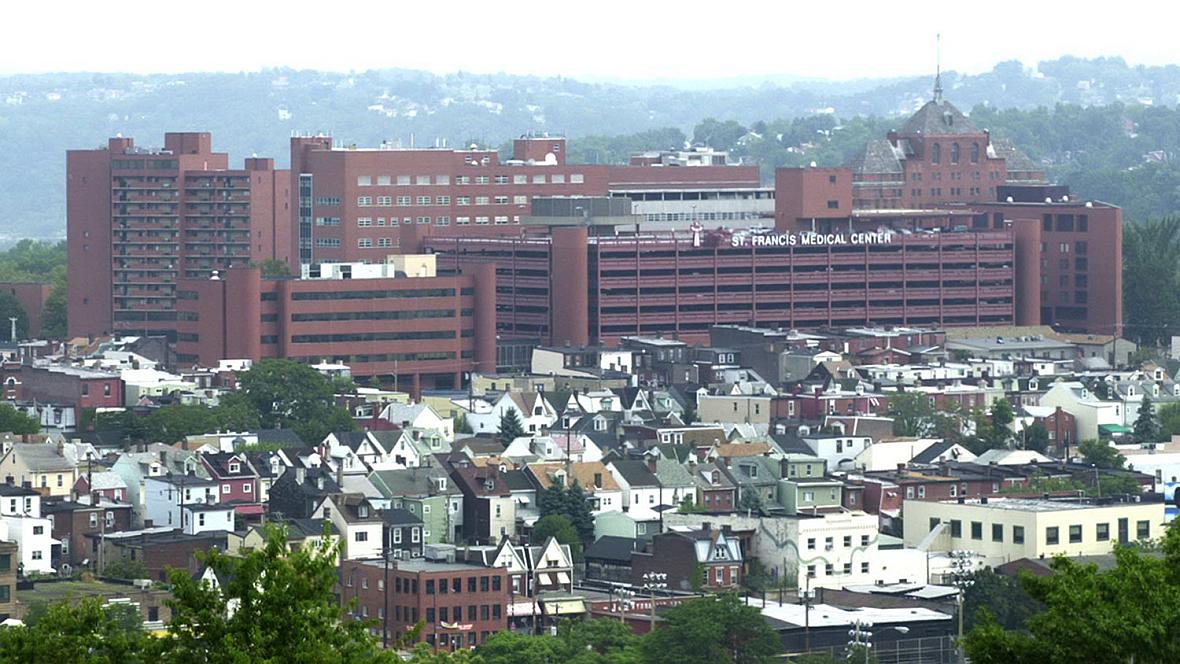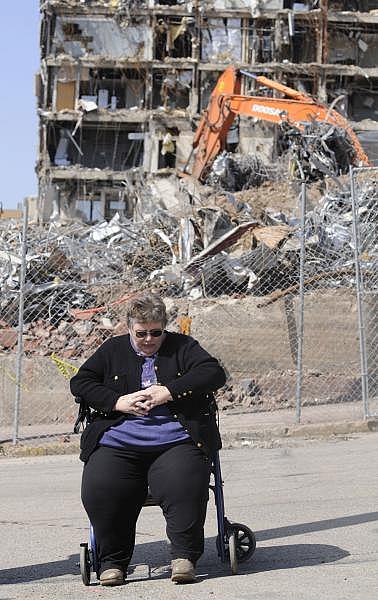Chapter 3: Poor Health: A frayed safety net
Sean D. Hamill wrote this report for the Pittsburgh Post-Gazette as a 2013 National Health Journalism Fellow. Other stories in the series include can be found here.

St. Francis Medical Center in Lawrenceville, closed in 2002
In some parts of the region, the hospitals as well as their patients are struggling financially. That means that in areas where free and discounted care is urgently needed, the hospitals are sometimes doing even less than their more prosperous counterparts.
The hospital that provided the least amount of charity care in the region was Ohio Valley Hospital in McKees Rocks, which provided only about $130,000, or about 2
10 of a percent of total expenses, in charity care in 2012.
The struggling urban hospital lost about $4 million on operations last year, according to state data.
It reports patients to credit bureaus if they fall behind on paying their bills, and does not list its financial assistance policies or the application on its website.
Joanne Schleifer, 58, of Braddock gathers her thoughts during a memorial service for UPMC Braddock in 2011.
Ohio Valley initially said it also did not have a set federal poverty level at which it provided discount care because it provided such financial assistance on a "case by case basis." But a week later it said it had just recently reviewed that policy and decided to set the limit for discount care at 300 percent of the federal poverty level.
"We are not trying to discourage any patients from using Ohio Valley Hospital," Ms. Evanac said in the email.
Monongahela Valley Hospital, by comparison, has less nearby competition for patients than Ohio Valley and provides more than double the percentage of charity care that Ohio Valley does for more than $500,000 in charity care.
It does not report its patients to credit bureaus if they don't pay on time and it allows patients to stay qualified for free or discount care for a year before it requires them to reapply, making it easier for the poor to obtain care.
Mon Valley's website also makes it easy to find its charity care policy and application form, two clicks away from its home page, under an "About MVH" tab.
"It's not there by accident," said Louis Panza, Mon Valley's president for the last decade. "It's where it belongs."
"We discussed that for the website and said, 'Put it where you can find it,'" he said.
Mon Valley also has ties to a federally qualified health center.
For example, a patient who comes into Mon Valley's emergency room and does not have insurance or a primary care doctor is referred to Mon Valley Community Health Services in Monessen for primary care.
"That's good for us, it's good for Mon Valley and it's good for the patient's health," said Luther Sheets, chief operating officer of Southwestern Pennsylvania Human Services, which runs the health center.
In addition, when the health center lost a primary care doctor recently, Mon Valley loaned it three part-time physicians until Mr. Sheets could hire a new one.
"When you have a community that has limited resources, you try to help, and you try not to duplicate resources that they provide," Mr. Panza said.
This article was originally posted in the Pittsburgh Post-Gazette

